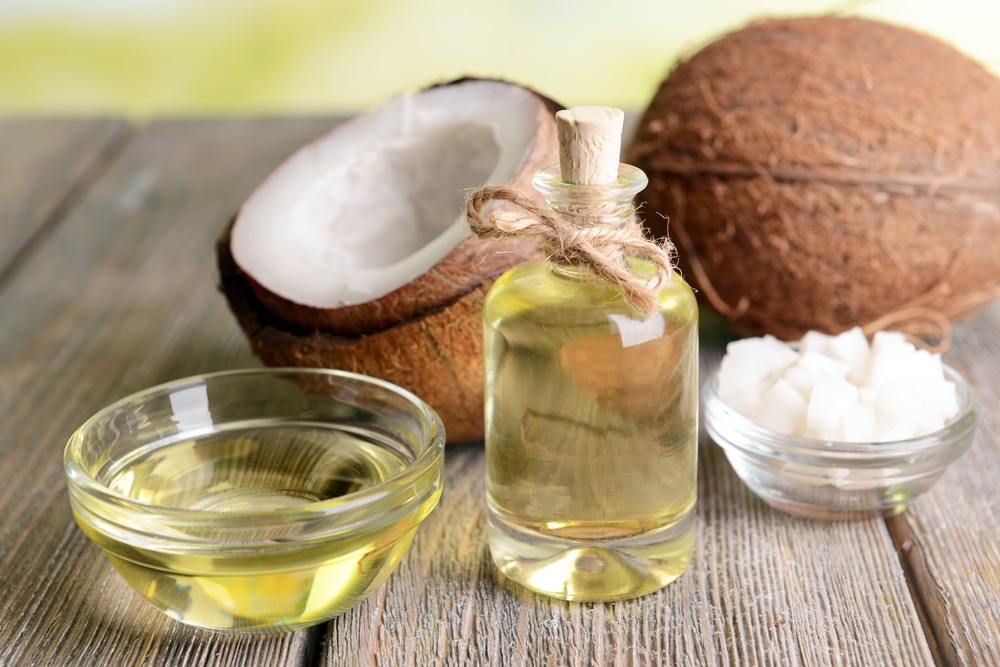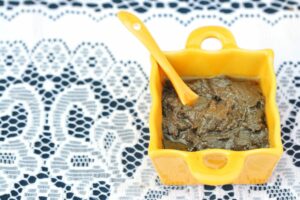There are several vegetable shortening substitutes you can use that’ll make baked goods healthier and richer in flavor. However, you’ll need to be mindful of how these alternatives can alter the recipe’s texture.
Vegetable shortening has its roots in the early 1900s, where manufacturers created it as a vegetarian-friendly and more economically viable alternative to lard.
Because of its semisolid nature, shortening prevents gluten from firming up the dough, giving baked goods a lighter texture.
We examined several types of vegetable shortening substitutes ranging from vegan-friendly to those that best mimic shortening. We’ll share our findings with you here.

Recommended Vegetable Shortening Substitute
Without further ado, below are tried and proven vegetable shortening substitutes:
1. Vegetable Oil

We recommend vegetable oil as a go-to substitute for vegetable shortening when you’re working with recipes that need melted shortening.
Since vegetable shortening contains hydrogenated and partially hydrogenated vegetable oil, you can expect many baked goods to come out of the oven with a similar consistency.
That said, some notable exceptions where you should avoid using vegetable oil as a vegetable shortening substitute include:
- Biscuits
- Pies
- Scones
The reason is that melted vegetable oil doesn’t mimic the pockets of fat that vegetable shortening creates. Therefore, if you use vegetable oil in these recipes, your dough won’t puff up as high as you’re used to.
Generally speaking, vegetable oil is a more effective substitute for savory dishes. However, regardless of the recipe you use, you can add the same amount of vegetable oil as the recipe calls for in vegetable shortening.
If you don’t have vegetable oil on hand, olive oil and other cooking oil can also work well. That said, we caution you to take care with the flavor of the oil you use.
For example, extra virgin olive oil may alter the flavor of your recipe. If you’re short on a specific type of oil in your home or concerned about the flavor profile, you can also try using two kinds of oil in the same recipe (half of one type of oil and half of another).
2. Butter

Butter is one of the best vegetable shortening substitutes, especially if you’re baking something sweet. By using butter, you can expect your recipe to be denser, with less flakiness than the dough usually has.
However, using butter will give your baked goods a richer flavor.
In fact, of the vegetable shortening substitutes that we’re sharing with you here, some bakers choose to use butter in place of shortening. They’ll do this even if shortening is available because they like the buttery flavor it gives their baked goods.
Butter is an excellent substitute for shortening when baking cookies. Your recipe will turn out well enough if you replace the same amount of butter as vegetable shortening. In this case, you can expect your cookies to have a flatter and crispier texture than the original recipe.
Alternatively, if you don’t want your baked goods to have a buttery taste or feel, you can use half butter and half oil.
As a final word of caution, butter has a higher water content than vegetable shortening. Since butter made in the United States must contain a minimum of 80% butterfat in addition to milk solids, you can expect butter to have around an 18% water content.
Therefore, if you want your baked goods to have a closer consistency to vegetable shortening, add an extra tablespoon or two of butter or use less of another liquid in the recipe.
Can’t find butter? Ghee might be a good substitute.
3. Lard

As we mentioned in the introduction, the invention of vegetable shortening came about, in part, to cater to people with vegetarian diets.
However, while there is an alternative for people with plant-based diets, those with no problem eating meat can still enjoy what vegetable shortening replaced: lard.
If the thought of eating lard has you picturing an early trip to the grave, you’ll be glad to know that pure lard doesn’t have any trans fat. In fact, it even has 15% more monounsaturated fat than butter, which is a healthy fat that scientists believe can lower the risk of heart disease.
Nevertheless, according to a study that compared the effect of lard and hydrogenated vegetable shortening on obesity in rats, researchers found that rats eating lard gained more weight, with an average increase of 32% body fat.
Needless to say, you’ll likely want to use lard as a vegetable shortening substitute in moderation. When doing so, you can use it as a 1:1 replacement.
Lard typically works best with savory dishes. Examples of recipes you can make with lard include:
- Biscuits
- Cornbread
- Pot pies
If you don’t have lard on hand, you can even use bacon or chicken fat. Use your best judgment, though—you likely won’t want to make sweets using these fats.
4. Coconut Oil

Vegetarians and vegans can breathe a sigh of relief, for coconut oil is an excellent shortening replacement.
According to Harvard, coconut oil contains 100% fat, of which up to 90% is the saturated variety. As a result, coconut oil becomes firm when cool and melts into a liquid at warmer temperatures. Unlike lard, coconut oil doesn’t contain cholesterol, so it’s an excellent, healthier alternative.
It’s best to use coconut oil as a vegetable shortening replacement for sweet dishes, especially those with coconut flavoring, since coconut oil can make your recipe take on a coconut flavor.
That said, there’s a trick for using coconut oil without your baked goods taking on such a strong coconut flavor—use refined oil. The difference is their smoke points, with refined oil having a higher smoke point, meaning that it undergoes more processing and has a milder flavor.
When baking with coconut oil, you can use the same amount of it as your recipe calls for in vegetable shortening. As mentioned earlier, you can also mix butter and oil to form a vegetable shortening replacement if you want to combine these two ingredients’ flavor and texture profiles.
5. Applesauce

If the lack of vegetable shortening in your kitchen has got you reflecting on how healthy it is for you—and the health impact of many of its substitutes—this is an excellent opportunity to consider using applesauce.
Due to the sweet nature of applesauce, it’s a better substitute for shortening in baking sweets than savory food.
Applesauce is the only vegetable shortening substitute on this list that requires a different ratio.
We recommend using half the amount of applesauce as shortening that your recipe calls for.
The reason being is that applesauce is denser than shortening. So, using it in the same quantity as shortening will alter your recipe’s texture.
Another factor to consider when using applesauce in your recipe is the amount of sugar it contains. Not only do you need to check whether your applesauce has sugar added to it, but different apples have different sugar contents.
For example, Granny Smith apples have among the lowest amounts of sugar.
Therefore, it may take some trial and error for you to determine the best ratio of sugar to applesauce in your recipe.
Can’t find applesauce? See applesauce substitutes for butter.
Frequently Asked Questions
If you still have questions about using a shortening substitute, we have answers.
Applesauce is one of the healthiest alternatives to vegetable shortening. You can also use other pureed fruits, such as banana or prune, depending on the flavor you want your recipe to have.
There are several shortening substitutes that you can use in a 1:1 ratio. Examples include:
1. Vegetable oil
2. Butter
3. Lard
Coconut oil
You can also mix and match shortening substitutes to equal the total ½ cup amount. That’s especially beneficial when using butter since butter has higher water content.
As of 2020, the Food and Drug Administration no longer allows artificial trans fat in foods, which shortening previously contained. As a result, shortening is most likely healthier than butter since it has less saturated fat.
Butter is better for making frosting if a rich, creamy flavor is your goal. However, if you know your frosting will be sitting out of the fridge for long periods and at higher temperatures, it’ll last longer if you use shortening.
Butter will give your pie crust a better flavor and creates the flaky layers that so many people desire in their pie crust. However, butter has a lower melting point than shortening.
Therefore, if you don’t get the dough temperature right, it’ll be more challenging to handle than if you made your pie crust with shortening.






